
Diagram 1, White to play. The right King move wins.
51...d5 was the reply to 51. Qh7 advocated in an early (Sept. 6) post by Regan titled "A concrete defensive idea for Black".

Diagram 1, White to play. The right King move wins.
Regan gave 52. Kf7+ Ka1(!) 53. g6 d4! 54. g7 (other moves are met by 54...d3!) Qf3+ 55. Kg8 Qd5+ 56. Kh8 Qd8+! with the basic 1Q vs. 2Q corner perpetual check. (Here 55. Ke7 is a little tricky, but 55...Qa3+! ensures that Black has enough room for checks.) Notice the importance of playing Black's King to a1 here. White, however, has a finesse directed against this move:
52. Kf6+!
Now 52...Ka1 53. Qf5! exposes a drawback of the corner retreat: Black's desirable reply 53...Qd4+? loses to 54. Qe5 with a pin. Black has no other checks, and White's second point is that after the pawn run 53...d4 54. g6 d3 55. g7, Black does not have the defending option ...Qg4 as in line B1) of the 51...Ka1 draw, but only 55...Qg1 56. Qa5+ Kb2 57. Qb4+ Ka3 58. Qa3+ Kb1 59. Qb3+ +/-, or 55...Qb3 56. Qf1+ (if only Black's King were still on b1, ...Kc2 would draw!) Kb2 57. Qg2+ d2 58. Qxd2+ and White quickly queens (mate in 17 more moves, in fact). Black seems to be simply lost after 53. Qf5, as there is not even a good way to re-position Black's Queen for checks, e.g. 53...Qc1/a4 54. g6 Qc6+ 55. Qe6 and no more good checks, or 53...Qb3 54. g6 Qb6+ 55. Kg5 Qg1+ 56. Qg4 Qe3/c1+ 57. Qf4 Qg1+ 58. Kf6 Qb6+ 59. Kf7 looks decisive. Note how Black keeps suffering from his King being on a1 in this last line. Also, 52...Kc1 53. Qc7+ Kb2 (53...Kd2 54. Qf4+ and 55. g6 wins) 54. Qxb7+ is EGTB+/-, and fairly swiftly (mate in 49 more moves). (The WT believed and acted on the principle that Black could not lose the b-pawn with check when White's pawn could reach g6---note for contrast that on 51. Qh7 d5 52. Qxb7+, all six King moves draw for Black---implying also that 51. Qh7 d5 52. Kf6+ Ka2 53. Qxb7 is a draw. Compare also that 51. Qh7 Kc1? 52. Qc7+ Kb2 53. Qxb7+ is EGTB+/-, mate in 89 more moves! This indicates how Black overall is holding by just one tempo, and how it is important for Black to push the d-pawn forward.) Hence Black must play
52. ... Ka2
but will now be made to regret being on this square! This looked OK for awhile as 53. Qf5 Qd4+! 54. Kf7 Qc4! (55. g6 d4+ 56. Qe6 Qxe6+ is equal as White's King blocks the check from g8, and likewise 56. Kf8 d3 57. g7 d2 shows that Black has evened the pawn race) or 54. Qe5 Qb6+ 55. Kf7 (to support g6; 55. Kf5 Qb1+! seems to go nowhere) d4 56. g6 d3! (better than 56...Qb3+ 57. Kf8 d3 58. Qd4!?---now 57. Qd5+ Qb3! equalizes) 57. g7 Qb3+ appear to be holds. The revelation that the idea from 52. Kf6+ now wins gave me (Regan) "a sense of egg on my face", and woke the WT up to the sense of imminent danger in this "drawn" endgame for Black.
Now 53. Qh2+!? Kb1! leads to an interesting question. Now imitating the actual game with ...b5 in place of ...d5 fails to win: 54. Qf4 d4! 55. g6 d3 56. g7 Qb3 57. Qf1+ Kc2! 58. Qg2+ d2=; this is one reason why Black's King went to b1. And 54. Qf2 d4 55. g6 d3 56. g7 Qg4 essentially transposes into the first main line of the 51...Ka1 draw. These lines we knew during the actual game. The question is whether White can win by 54. g6!?, when 54...d4? 55. g7 Qf3+ 56. Kg6 Qe4+ 57. Kh6 Qe6+/g4 58. Kh7! and 54...Qf3+ 55. Kg5! d4? 56. g7 Qd5+ 57. Kh6 Qe6+ 58. Kh7 both lead to 58...Qf5+ 59. Kh8 Qf6 60. Qh3! (better than 60. Qh5---?) Kb2 (probably best) 61. Qg2+ Kc3 62. Qg6 Qd7 63. Kh6 and it looks like the b-pawn is no help to Black. Black must play 54...Qf3+ 55. Kg5 Qe3+ 56. Qf4 Qe7+, transposing into the main "58...Qf5" line with an extra Black pawn at b7. Some indication that this pawn may help Black is given by 57. Kh6 Qe6 58. Qf3 d4 59. Qd3+ Ka2 60. Qxd4 being EGTB= and 58. Qd4 being not Zugzwang but a probable draw after 58...b5!, e.g. 59. Qb4+ Kc2! 60. Qc5+ Kd1 61. Qxb5 EGTB= or 60...Kd2 61. Qxb5 EGTB=. However, there may be defects of the pawn's presence that White may show with e.g. 57. Kh5!? here, or maybe 57. Kh6 Qe6 58. Qd4 b5 59. Kg5 Qe7+ 60. Kh5!? This is an interesting matter for study; meanwhile we take the "win in the hand" that we saw in late September:
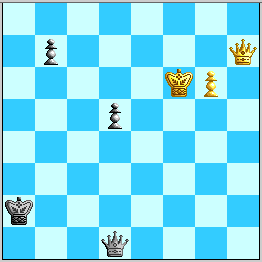
Diagram 2. White's Queen is very much in play....
Now if only Black could check on c3, the game would be a cold draw! See the next note. Since 53...Qf3+ 54. Ke7! Qa3+ (54...Qe4+ 55. Kd8 and 54...Qe3+ 55. Kd7 both run Black out of checks in positions where White's Queen has f7 available) 55. Ke8! transposes to lines below, and 53...Ka1 54. Qh4! is effective (note that 54. Qxb7? Qd4+!! is drawn, but now 54...d4 55. g7 Qf3+ 56. Kg6 Qc6/g2+ 57. Kh7 and soon +/-, or 56...Qd3+ 57. Kh6 Qe3+ 58. Kh7 ditto; 54...Qf3+ 55. Kg5! Qe3+ 56. Qg4 Qg1+ 57. Kf6 Qb6+ 58. Kf7+/-, or 55...Qg2+ 56. Qg4 Qd2+ 57. Qf4 Qg2+ 58. Kf6 d4 59. g7 d3 60. Qa5+ Kb2 61. Qb4+ +/- represent Black's ills), while other moves are met by 54. Qf7!, we highlight only Black's best move.
53 ... Qd4+
Now 54. Ke7? Qc5+! is a cold draw, e.g. 55. Kd8 Qd6+ 56. Kc8 Qc6+ 57. Kb8 Qd6+ 58. Kxb7 Qb4+ EGTB=. White must step nimbly.
54. Kf7!
Now 54...b5 55. Qh2+ K-any 56. g7 Qa7+ 57. Kg6 Qb6+ 58. Kh5+/- or 57...Qa8 58. Kh7 Qa7 59. Qf4 Qd7 60. Qf3/f1+ K-any 61. Kh8+/- are quick wins. We consider:
A. 54. ... Qf4+
55. Ke8! and now:
(A1) 55...Qb8+ 56. Kd7 is "b-pawn block" for Black. Since White threatens 57. g7+/- and Queen moves by Black are subsumed by other play, pretty much forced is 56...b5. Now the too-hasty 57. g7? allows a perpetual check by 57...Qb7+, as e.g. 58. Kd6 Qb6+ 59. Kxd5 is EGTB=. And note that Black's Queen covers the check at h2. White, however, has an effective non-checking move that brings about the first major theme of this endgame: 57. Qf7!

Diagram 3, Black to play. Theme #1 The Pin Battery.
Now if Black resumes checking by 57...Qa7/b7+, White will gain the tempo for playing g7 owing to the discovered check after taking Black's d-pawn: 58. Kd6 and: 58...Qb6+ 59. Kxd5 is EGTB+/- with mate in 26 more moves, 58...Qb8+ 59. Kxd5 is just one move better, 58...Qa3+ 59. Kxd5 is EGTB+/- mating in 47 more moves, and the longest Black holds out is 58...Qa6+ 59. Kxd5 EGTB+/- mating in 49 more moves. [Note, however, that without Black's b-pawn the resulting position after ...Qb6+ is drawn, and likewise with Black's Queen on a6 and most importantly on b2. This implies that without Black's b-pawn, Black would have an "EGTB perpetual check" by 57...Qb7+ 58. Kd6/e6 Qb6+! 59. Ke5 Qb2+! We realized from analysis of 51...Ka1 that sacrificing Black's b-pawn would defuse the "Pin Battery" in many cases (since the 5-piece EGTBs were available during the game), and this was a high consideration for the 54...b4 move. Also for the record, with the pawns on g6 and b5 Black does draw after Kxd5 if Black's Queen is on c3 or e3., but in those cases White will play Kd6! before capturing the pawn. ]
Black has more chances by waiting, since 58. g7 will unguard the White Queen: 57...b4 58. g7 Qa7+! 59. Ke6 Qe3+! White will not be able to play Kxd5 owing to the skewer on b3, but Black's final indignity is that covering b3 loses control of the deep Queenside squares. White wins by Theme #2: Hiding Behind the Q-side Pawns: 60. Kd6! Qg3+ 61. Kc6 Qc3+ 62. Kb7+/-.
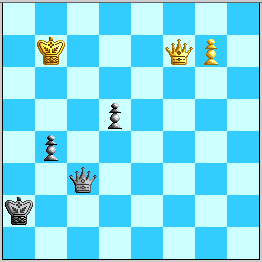
Diagram 4. Black gets a hiding.
Likewise 57...b4 58. g7 Qb7+ 59. Ke6 Qc6+ 60. Ke5 Qc3+ 61. Kd6! is +/-. Black's other idea is to step away with the King sooner rather than later, but 57...Ka1/b1 58. g7 (re-locating the Queen to the g-file with checks also wins) Qb7+ 59. Ke6 Qc6+ 60. Ke5 Qc3+ 61. Kd6 Qa3+ 62. Kc6! Qa6+ (else 63. Kb7+/-; note that b7 is a "death square" allowing no checks) 63. Kc5! Qc8+ (63...Qa3+ 64. Kb6 Qd6/e3+ 65. Kb7+/-) 64. Kb4! Qc4+ 65. Ka5 Qa4/a2+ 66. Kb6 Qd4+ 67. Kb7+/-. Other checking sequences by Black meet the same fate. The other representative line is 57...Ka3 58. g7 (there is something to be said for 58. Qe7+, but let's stick to the theme:-) Qb7+ 59. Ke6 Qc8+ 60. Ke5! Qb8+ (60...Qc3+ 61. Kd6 etc.) 61. Kd4 Qb6+ 62. Kd3+/-.
(A2) 55...b5 56. Qf7! essentially transposes into (A1).
(A3) 55...Qe5+ 56. Qe7 also essentially transposes after 56...Qh5 57. Qf7, 56...Qb8+ 57. Kd7, or 56...Qh8+ 57. Kd7 Qh3+ 58. Qe6 Qg3 59. Qf7!
(A4) 55...Qa4+ 56. Kf8! d4 (56...Qa3/b4+ 57. Qe7 Qf3/f4+ 58. Qf7 sets up the Pin Battery with tempo, while on 56...Qa8+ is treated next) 57. Qf7+ Ka1 (best). Now White can win by 58. Qf1+ etc., but the most instructive (and possibly quickest) way is 58. g7(!) Qa3+ 59. Ke8! Call this Theme #3: The Black b-Pawn Tragedy.

Diagram 5. Remove Black's b-pawn and it's drawn!
The b-pawn prevents Black from keeping White's King pinned down to the neighborhood of f7, and then Black's d-pawn blocks the Queen just enough to enable White to run effectively to the Queenside, even though Black's King is in the very corner! This is the idea Kasparov and Alterman use at the very end of their file claiming a winning strategy against 58...Qf5 in the actual game. After 59...Qa4+ 60. Kd8 Qa5+ 61. Kc8 Qa8+ 62. Kc7 Qa5+, 63. Kxb7 is EGTB+/- #19, and putting Black's Queen on other squares changes nothing.
(A5) 55...Qa4+ 56. Kf8 Qb8! A cagey defense covering h2. 57. Qh4! Qc7+ (57...d4 58. g7 Qc7+ 59. Qe7 Qf4+ 60. Ke8 Qb8+ 61. Kd7 wins) 58. Qe7 Qf4+ 59. Ke8 Qb8+ 60. Kd7 b5 61. Qf7 transposes into (A1). But Black has a much better form of this idea. Wind it back to Move 54:
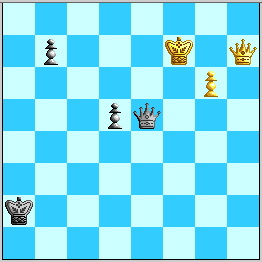
Diagram 6. Theme #4: Centralize!
Suddenly White has no checks, 55. g7 and 55. Kf8/g8 allow a perpetual, and on 55. Qh4 d4!, both 56. g7 Qf5+ 57. Qf6 Qd7+ and 56. Qf2+ Ka1! 57. g7 Qd5+ look like analogues of the Position G analysis in which Black's b-pawn may not be a liability. White's only win may be:
55. Qg7!
Now non-checking Queen moves can be met by 56. Qf6 and White emerges strongly. Hence we consider Black's three Queen checks in turn, with the first being most representative.
(B1) 55. ... Qc7+
56. Kg8!
and now:
(B1a) 56...Qb8+ 57. Qf8 Qe5:
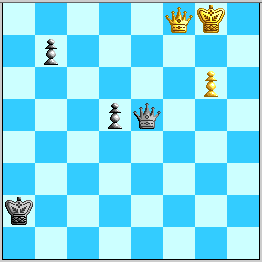
Diagram 7. Air on a "G" String? No---the Funeral March in "b"!
58. g7 d4 59. Qf7+! Ka1 60. Kf8! (or 60. Kh7!) is the "b-Pawn Tragedy" in its fullest form: 60...Qc5+ 61. Ke8 Qc8+ 62. Ke7 Qc7+ 63. Kf6! Qf4+ (allowing a 64. Qe6 interposition is known to lose) 64. Ke6! Qe4+ 65. Kd7! Qc6+ 66. Kd8 Qd6/b6+ 67. Kc8 makes the inexorable progress.
(B1b) 56...Qd8+ 57. Qf8 Qg5/h4 58. g7 wins similarly to (B1a).
(B1c) 56...Qc8+ 57. Qf8 Qe6+ (again, 57...Qg4 58. g7 wins similarly to B1a) 58. Qf7 (probably simpler than 58. Kg7 a-la Kasparov-Alterman) Qc8+ 59. Kg7
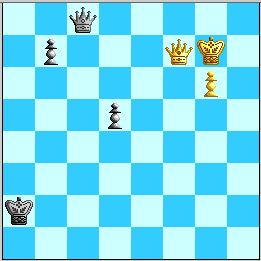
Diagram 8. The "Solnushka defense" does not work when White's Queen is already at f7.
(i) 59...b5 60. Kf6! is a winning "Pin Battery" walk: 60...Qc3+ 61. Ke6 Qe3+ 62. Kd6! and either White reaches b7 or playes Kxd5 when it's EGTB+/-.
(ii) 59...Kb2 (59...Ka1 60. Qf1+ Ka2 transposes) 60. Qf2+ Ka1 (60...Kc1 and 60...Kc3 make 61. Kh6! too strong, owing to crosschecks on f4 or f6) 61. Qa7+! Kb1/b2 62. Qb6+ K-any 63. Kf7 is known to be a win without Black's b-pawn, and the b-pawn seems to only hurt here, e.g. 63...Qf5+ 64. Ke7 Qe5+ 65. Qe6, and now Black can't play 65...Qc7+ 66. Ke8 Qb8+ 67. Kd7+/- at all.
(iii) 59...Qc3+ 60. Kf8 gives White the opportunity to demonstrate that the "Pin Battery" is effective even with Black's b-pawn back at b7: 60...Qc8+ (60...Qb4+ is the way to head toward the Position G draw when Black's b-pawn is absent, but now 61. Qe7 Qf4+ 62. Kg8 gives Black little choice but heading for Diagram 7 with 62...Qb8+, and White could continue on with 61 Ke8 as well) 61. Ke7 (61. Qe8 a-la Kasparov-Alterman probably wins as well) and the ultimate point is that Kxd5 will be EGTB+/- with Black's Queen on b6, b2, a6, c3, e3, c8, b8 etc. (Also note that 61...Qc5+ 62 Kd8!? Qd6+ 63. Kc8 Qc5+ 64. Kb8!! Qd6+ 65. Kxb8 wins because Black's Queen could not reach the drawing square b5!)
(B2) 55...Qf4+ 56. Qf6 Qc7+ 57. Qe7 Qf4+ 58. Ke8 Qb8+ 59. Kd7+/- or 58...Qg4 59. g7 and soon +/-.
(B3) 55...Qf5+ 56. Qf6 Qd7+ 57. Kg8! and now
(a) 57...Qc8+ 58. Qf8 transposes into (B1c);
(b) 57...b5 58. g7 b4 59. Qf2+ Ka3 60. Qf3+ b3 61. Kh8+/-;
(c) 57...Qe8+ 58. Kg7! b5 59. Qf2+ Ka3/a1/b1 60. Qf3+/d4+/f5+ K-any 61. Kh7+/-.
Thus with my "most principled" 51...d5, Black would have had a resignable position withion a dozen moves! It turns out that the correct implementation of the idea of advancing the d-pawn is 51...Ka1! 52. Qg7+ Ka2 53. Qf7+ d5! The point is that White's King must emerge when the g-pawn is still at g5 and unprotected by White's Queen. Even here, however, Black must be flexible and advance the b-pawn if the opportunity presents itself, as with 54. Kh7 Qh1+! 55. Kg7/g8 b5! 56. g6 b4 and equalizes.